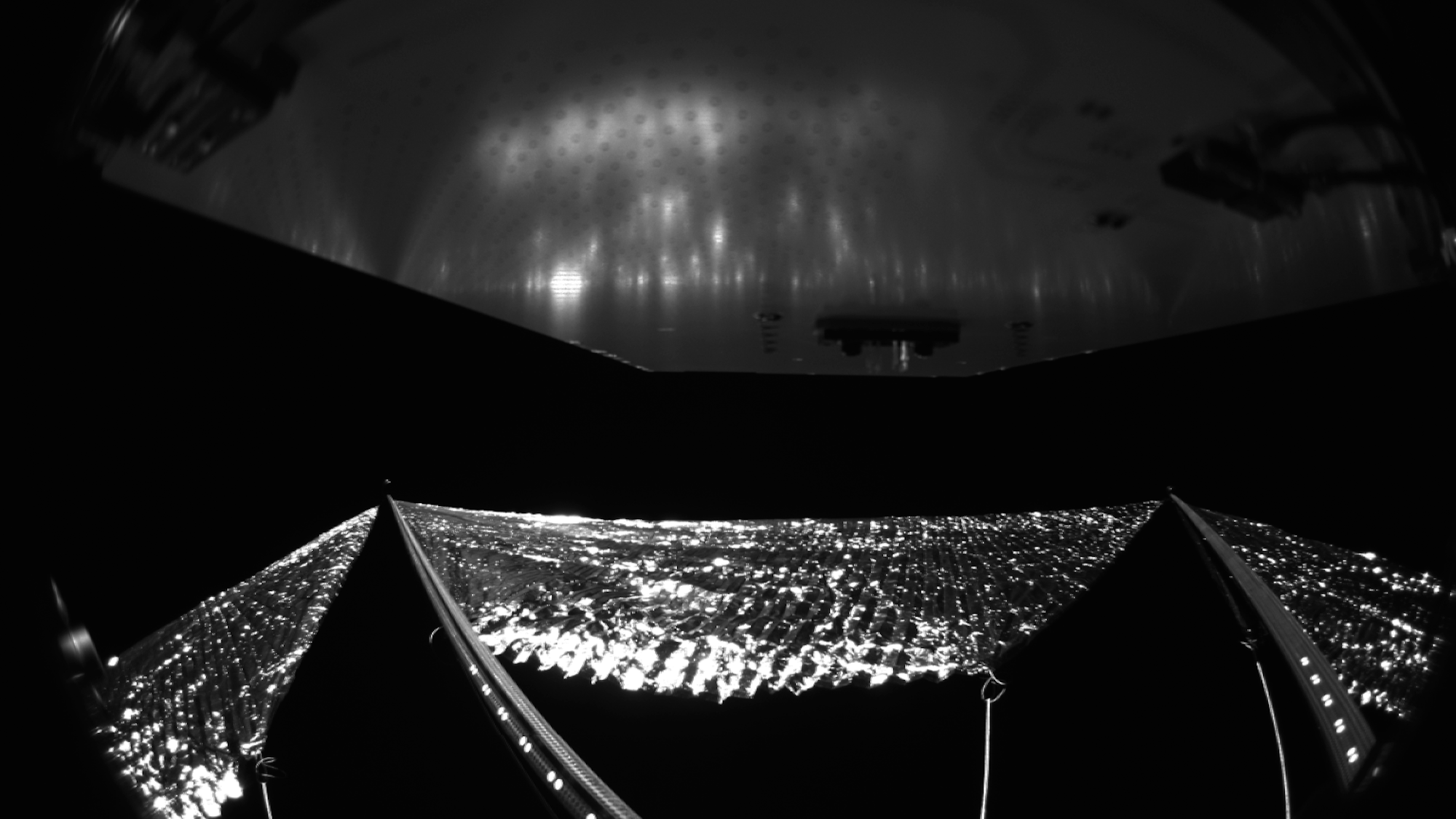
The ACS3 solar sail can be seen underneath the orbiter at the bottom of the photo. Credit: NASA
NASA has released the first look at its Advanced Composite Solar Sail System (ACS3) in orbit. Although the agency describes the device as currently “slowly tumbling” around the planet at an altitude of roughly 600 miles above Earth, the freewheeling phase is all part of the larger plan. And with the help of a new feature in NASA’s mobile app, interested audiences on the ground can potentially even spot the sail above them.
The ACS3 launched back in April, and has since spent its time spinning through its sun-synchronous orbit as engineers monitor its equipment and prepare for the next phases of deployment. Intended to serve as a prototype for a new portable sail design, the results from upcoming tests could help pave the way for larger versions capable of transporting satellites and even spacecraft throughout the solar system. First, however, NASA needs to confirm that the ACS3’s fundamental dynamics are reliable enough to scale up for future missions.
[Related: NASA will unfurl a 860-square-foot solar sail from within a microwave-sized cube.]
The concepts behind solar sails have long been established—by using ultra-thin sheets of reflective material to capture the Sun’s ionic energy emissions, a solar sail can propel its cargo at incredibly high speeds without the need for additional fuel sources. In this case, the ACS3 prototype relies on a specially crafted set of collapsible booms made from flexible, carbon fiber-reinforced composite polymers. Once fully extended to 23-feet-long, the four booms will support an 860-square-foot sheet of microscopically thin plastic while also maintaining a tautness that would allow for solar energy collection.
Despite its overall size, the ACS3’s secret weapon is its size before deployment. In its transport packaging, the booms are stored in a roughly envelope-sized casing before uncoiling through a device resembling a tape spool.
At the moment, only the sail is out of storage in orbit. As NASA explained on Thursday, the booms will extend once engineers confirm everything is ready to go, at which point they will re-engage ACS3’s “attitude control system” to stabilize it in orbit. After this, the team will initiate maneuvers to raise and lower its overall orbit.
Even now, however, the agency says watchful enthusiasts can possibly catch a glimpse of the ACS3 at night as it orbits the planet. According to NASA, “its visibility may be intermittent” through the evening while appearing at variable levels of brightness as it continues its tumble. The NASA mobile app now includes an ACS3 tracker to help locate it during its orbital path. The agency also encourages anyone able to snap a photo of it overhead and share online with the #SpotTheSail hashtag.



